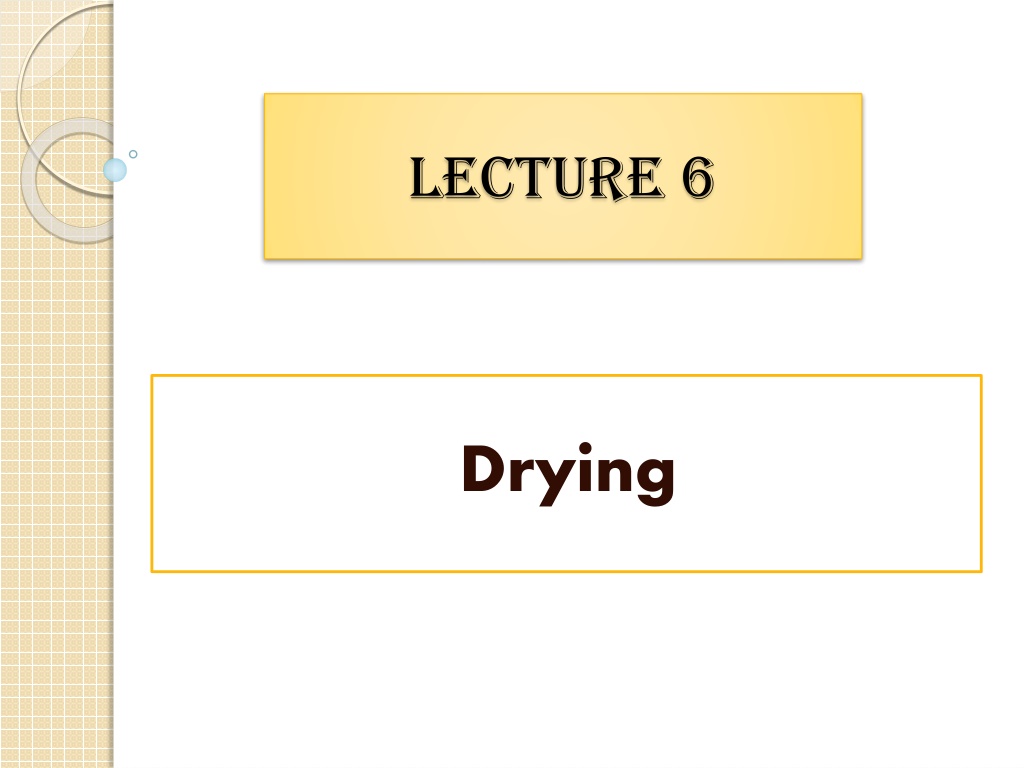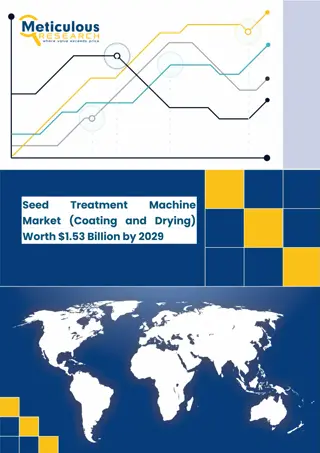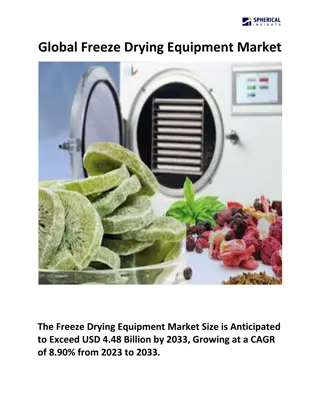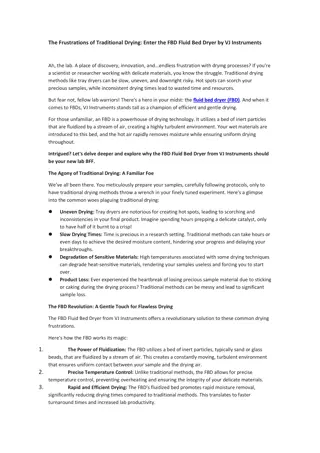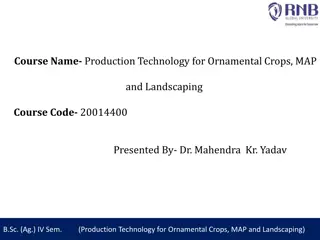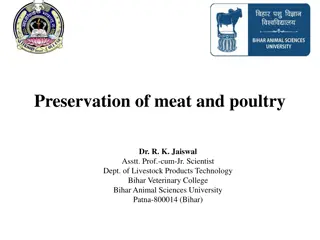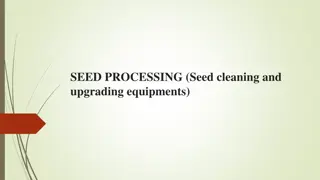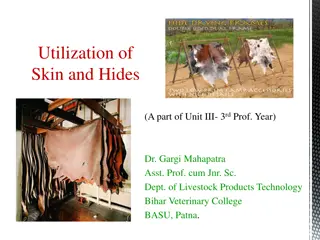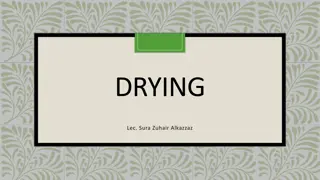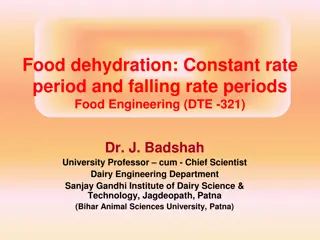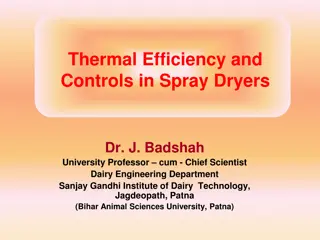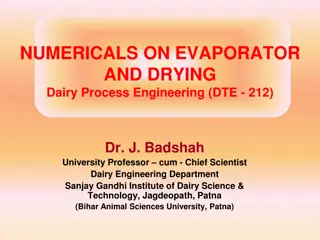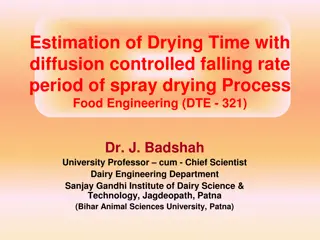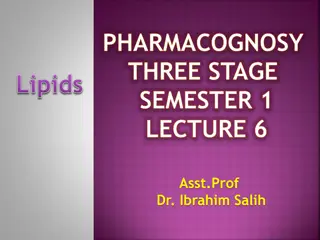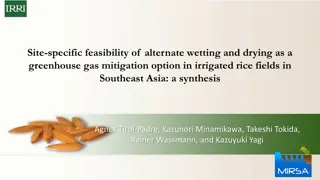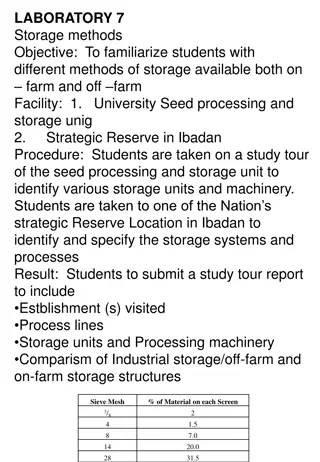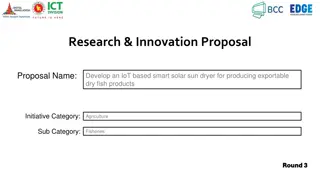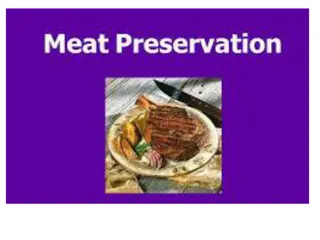Drying Process Essentials
The content covers the fundamental aspects of drying processes, including definitions, methods, purposes, and psychrometry. Explore the removal of liquid from materials, various drying techniques, and the importance of drying in pharmaceutical manufacturing and preservation. Understand psychrometry for moisture measurement and the significance of humidity charts in determining air-water vapor relationships.
Download Presentation

Please find below an Image/Link to download the presentation.
The content on the website is provided AS IS for your information and personal use only. It may not be sold, licensed, or shared on other websites without obtaining consent from the author. Download presentation by click this link. If you encounter any issues during the download, it is possible that the publisher has removed the file from their server.
E N D
Presentation Transcript
Lecture 6 Drying
Content 1- Definition of drying 2- Purposes of drying 3- Psychrometry (moisture measurement) 4-Theory of drying
Definition: Removal application of heat. of liquid from material by How it can be accomplished: By transfer of a liquid from a surface into an unsaturated vapor phase.
Other methods of drying: A- Expression of a solid to remove liquid. (E.g. squeezing of wetted sponge) B- Extraction of liquid from a solid by use a solvent. C- Adsorption of water from a solvent by desiccants (anhydrous calcium chloride) D- Absorption of moisture from gases by passage through a sulfuric acid column. E- Desiccation of moisture from a solid by placing it in a sealed container with a moisture removing material (Silica gel in a bottle)
Purposes of drying: 3- Aid in preservation of animal and vegetable drugs: A- minimizing mold and bacterial growth in moisture laden material B- facilitate comminution by increasing friability. 1- Unit of process in pharmaceutical manufacturing (e.g. preparation of granules then dispense as capsules or tablets). 2- Reduce bulk and weight lower the cost of transportation and storage.
Psychrometry (moisture measurement) Determination concentration and carrying capacity of the gas. of the vapor Humidity of gas Concentration of water vapor in gas
Psychometric or humidity chart * Curves represent relationship temperature humidity of the air- water vapor system at constant temp. between and Saturation humidity curves (CDE) 100% RH: Is the absolute humidity which partial pressure of water vapor in air = vapor pressure of free water at same temp. Air saturated with moisture is completely Humidity change does not
At point C, air is saturated with water vapor and temp. 60 F referred to us (Dew Point). (Temp. of given mixture of air & water must be cooled to become saturated) (i.e. hold Max. amount of moisture without condensation). Involve two cases: 1- Cooling mixture below dew point (50 F) [point F] {Water vapor condenses and produce 2 phase system of saturated air (c) and droplet of free air}.
2- To make air for drying purposes (without changing absolute humidity) {Raise temp. to 81 F (point A), the air is not completely saturated and accept more vapor}. Percent relative (absolute) humidity {ratio absolute humidity to absolute humidity of air at that temp.}
If air in point A (used to dry wet material) Difference in vapor pressure between surface water and the air Liquid evaporate (heat of vapor of water) Cools the evaporated surface below air temp. Difference in temp. Transfer heat from air to liquid at increased rate when temp. difference become larger. Heat transfer = Heat of vapor Temp. stabilization (called wet bulb temp.)
Humidity measurement 1- Gravimetric method (amount of air is passed over a previously weighed moisture-absorbing chemical like phosphorous pentoxide) Advantages: Accurate Disadvantages: cumbersome and slow
2- Sling psychrometer (measure humidity by taking 2 temp. dry and thermometer-) wet bulb Bare bulb used to measure actual air temp. Wick saturated with water The through the air, and 2 thermometer readings taken at successive intervals until temp. no change. psychrometer is whirled Advantages: Rapid measure of temp.
3- Dew point (used to measure temp. to determine humidity instead of wet bulb temp. measurement). Method: observe temp. at which moisture begins to form on a polished surface in contact with air. By cooling the surface in refrigerator until first fog of moisture appears.
4- Hygrometer (utilizes certain materials whose properties change on contact with air of different relative humidities). 2 types: 1- Mechanical hygrometer: uses hair, plastics or wood fibers which expands or shrink with changes in humidity. Mechanism: moisture sensitive element connected to a pointer and any change in length causes the pointer to move across a dial calibrated in humidity units. https://tse1.mm.bing.net/th?id=OIP.Mb796c5017739a997a807bb97bfdc5c7fo0w=300h=300c=0pid=1.9rs=0p=0r=0 2- Electrical hygrometer: measure the change in electrical resistance of moisture-absorbing materials for humidity.
Theory of drying Drying involves both heat and mass transfer operation's. A- Heat transfer to the material to be dried to supply latent heat required for vaporization of moisture. B- Mass transfer involved in: 1- diffusion of water from the material to the evaporating surface, 2- subsequent evaporation of the water from the surface, 3- diffusion of the resultant vapor into the passing air stream.
The Drying process focused on the film of liquid at the surface of the material being dried. The rate of evaporation of this film is related to the equation: dW/d = q/ .(1) Where dW/d (rate of evaporation pounds of water per hr. ) q (overall rate of heat transfer {BTU per hour}) (latent heat of vaporization of water {BTU per pound}). Driving force is a humidity differential, whereas for heat transfer is temperature differential. The rate equation is as follows: dW/d = k A(Hs _ Hg) .. (2)
where dW/d (rate of diffusion) expressed as pounds of water per hour K (coefficient of mass transfer) [pounds of water/(hour) (square root) (absolute humidity difference A (area of the evaporation surface) in square feet Hs (absolute humidity at the evaporation surface) {pounds of water per pound of dry air} Hg (absolute humidity in the passing air stream) {pounds of water per pound of dry air}.
After the initial period of adjustment, the rate of evaporation is equal to the rate of diffusion of vapor, and the rate of heat transfer can be equated with the rate of mass transfer : dW/d = q/ = k A (Hs Hg) (3) If the overall rate of heat transfer, q, is expressed as the sum of the rates of heat transter by convection, radiation, and conduction. equation is expanded to the form: dW/d = (qc + qr + q k) / = k A (Hs Hg) . (4) Where qc , qr , q k are the rates of heat transfer by convection, radiation and conduction, respectively.
The rate of drying may be accelerated by increase of the individual terms in equation 4. A- The rate of convection heat transfer, qc increased by increasing the air flow rate with raising the inlet air temperature. B- The rate of radiation heat transfer, qr speed up by introducing high temp. radiation heat source into thee drying chamber. C- The rate of conduction heat transfer, qk stepped up by reducing thickness of material being dried and allowing it to come in contact with raised temp. surfaces. D- increasing air velocity by increasing coefficient of mass transfer, K E- Dehumidifying the inlet air increasing the humidity differential (Hs Hg).
